Note from the CPD Blog Manager: This is part 5 of a photo essay series exploring Expo 2020 Dubai through historical context, individual country participation and public diplomacy opportunities through World Expos....
KEEP READINGThe CPD Blog is intended to stimulate dialog among scholars and practitioners from around the world in the public diplomacy sphere. The opinions represented here are the authors' own and do not necessarily reflect CPD's views. For blogger guidelines, click here.
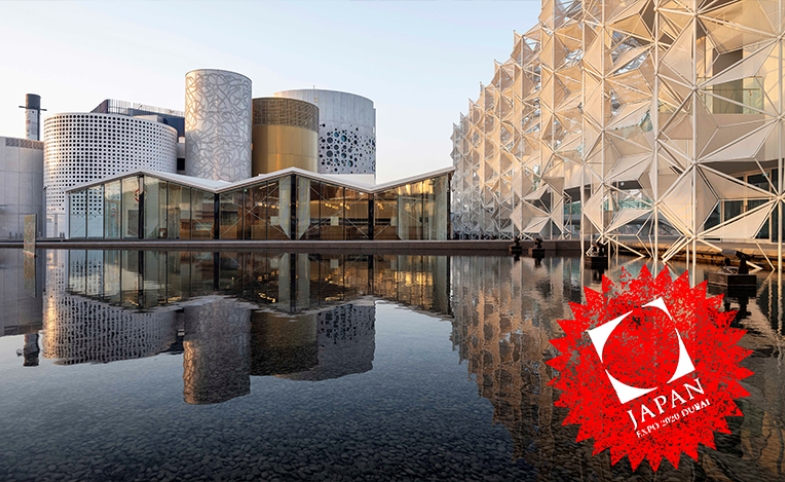
Expo 2020 Dubai: Japan: Technology, Depth and Uniqueness
Note from the CPD Blog Manager: This is part 6 of a photo essay series exploring Expo 2020 Dubai through historical context, individual country participation and public diplomacy opportunities through World Expos. The author is CPD Assistant Director for Engagement and CEO of ExpoMuseum.com. Read part 1, part 2, part 3, part 4 (Germany Pavilion) and part 5 (Morocco Pavilion).
At Expo 2020 Dubai, one of the most popular exhibitions is hosted by the Japan Pavilion. As one of the founding members of the Bureau International des Expositions (BIE), Japan has been active as a host of landmark Expos and a participant with memorable architecture and exhibits. Japan has organized Expos 1970 Osaka, 1975 Okinawa, 1985 Tsukuba and 2005 Aichi, and will host Expo 2025 Osaka.
Following a long-held tradition, Japan presents itself at Expo 2020 Dubai with a carefully curated combination of technology and cultural heritage. Complementing the public diplomacy best practices of Germany and Morocco discussed in previous posts in this series, Japan employs technology in manners that do not take over the human experience, uses exhibits to inspire moments of deep insight, and presents concepts linked to its culture in a unique and detailed way.
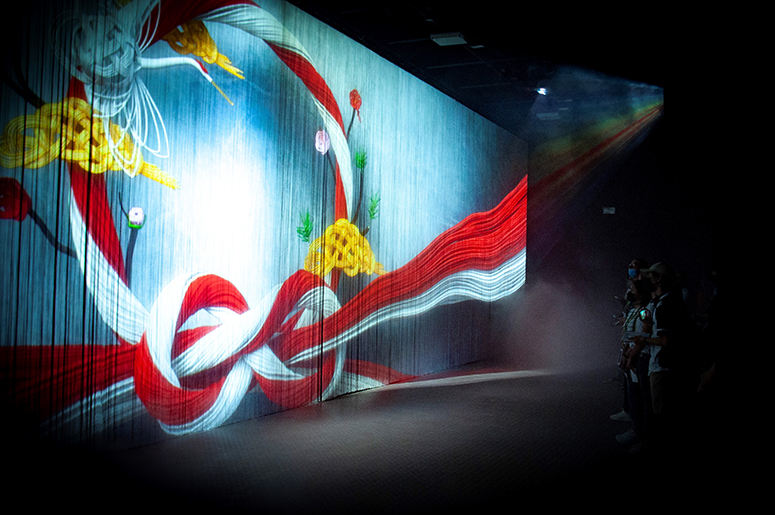
This scene features the history and culture of Japan at Expo 2020 Dubai. (Image: César Corona / Expomuseum.)
Before starting the visit, each visitor is assigned a device similar to a smartphone. This device provides personalized information to visitors and collects data to interact with the exhibits. The organizers of Expo 2025 Osaka plan to use some of this collected information to inform decision-making. While the device is an important companion throughout the pavilion, the visit does not depend on it. The nature of the exhibits helps visitors focus on the physical experience and complements it with data. As a best practice not only for public diplomacy but also for new media as a channel, the design of the exhibit allows for a great visitor experience even if digital technology fails.
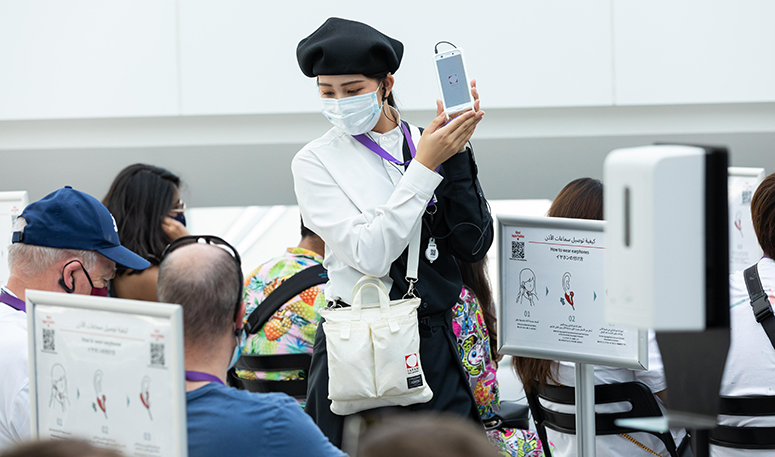
Visitors receive a device to accompany them through the visit and collect data in the Japan Pavilion at Expo 2020 Dubai.
(Image: Christophe Viseux / Expo 2020 Dubai.)
Communicating deep ideas to help people take ownership of something is a challenge in public diplomacy. Japan does it very well in at least two sections of its pavilion. In the room "Issues," a wall shows videos of global challenges caused by economic growth and globalization. The projection slowly integrates visitors into the projection by using an infinity mirror to symbolize the role each one of us has as part of the problem and the solution.
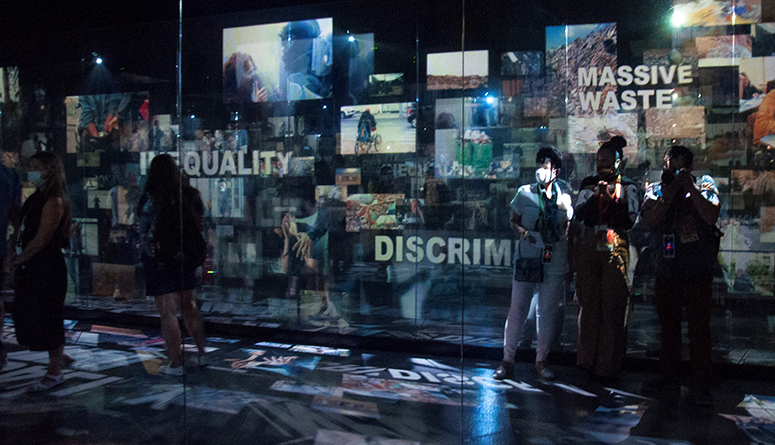
A mirror integrates visitors into an exhibit on global challenges in the Japan Pavilion at Expo 2020 Dubai.
(Image: César Corona / Expomuseum.)
Another moment for deep thought is offered in the room "Where Ideas Meet," where dense mist takes individual visitors away from the collectivity, both physically and symbolically. The effect creates a sensation that shifts between a light sense of anxiety and internal peace. The mist makes visitors slow down and use senses other than sight. Once the mist fades away, connections among visitors are highlighted on the walls by analyzing the data collected by the devices assigned to visitors.

Dense mist creates a sense of individuality within a collectivity at the Japan Pavilion at Expo 2020 Dubai.
(Image: César Corona / Expomuseum.)
Room "Innovation" contains one of the finest exhibits at the whole Expo site. Tens of miniature scenes (known as mitate in Japan) show aspects of Japanese and Emirati culture by using daily life objects. The experience reinforces the image of Japan as a country with a unique view of the world, a refined sense of humor and a culture that cherishes attention to detail. In stark contrast to people rushing through other pavilions, mitate make visitors slow down and take the time to closely observe and enjoy this unique art. Controlling the exposure of the audience to the message in such an effective and refined way is possibly one of the hardest best practices to achieve in public diplomacy.

Miniature scenes known as mitate make this Japanese Pavilion exhibit unique and enjoyable at Expo 2020 Dubai.
(Image: César Corona / Expomuseum.)
Overall, the Japan Pavilion at Expo 2020 Dubai exemplifies a thoughtful use of communication strategies that could be applied in many public diplomacy scenarios. Another best practice in the pavilion is informing visitors about the length and format of the visit before they commit to a long wait in the queue. The visit normally requires about one hour, and there is no possibility of doing it faster because the visit flow is controlled in every room.
While Japan has done an impressive job at the Expo, there are a few things that I believe could make the presentation even stronger. Using as a reference the Japan Pavilion at Expo 2000 Hannover, made primarily of paper by architect Shigeru Ban, the architecture of the pavilion at Expo 2020 Dubai seems a bit ordinary. The architecture is beautiful, and it incorporates elements that connect aspects of Japanese and Emirati cultures, but Japan is known to take risks and to do it successfully. Also, I heard several visitors mention that they were confused at the end of room "Where Ideas Meet," as they were incited to run energetically in circles, particularly after the whole experience had been very relaxing.
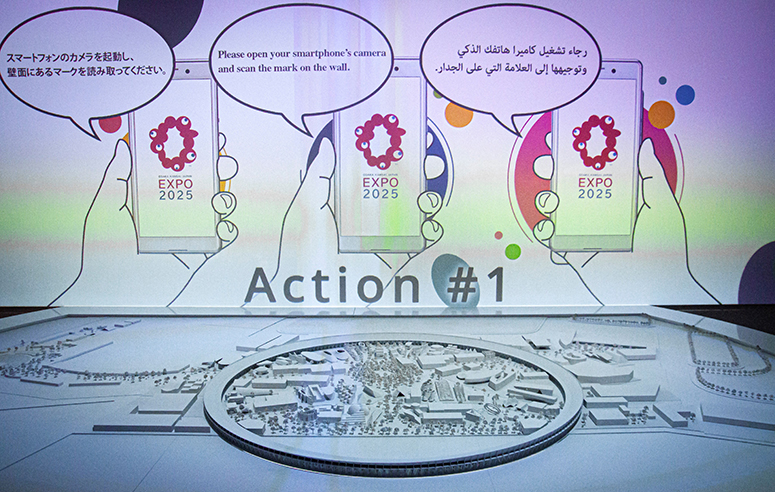
A model of an Expo 2025 Osaka exhibit in the Japan Pavilion at Expo 2020 Dubai. (Image: César Corona / Expomuseum.)
Preparations from the host and participating countries are underway for Expo 2025 Osaka. To date, a total of 87 countries and six international organizations have confirmed their participation.
I invite you to visit the Japan Pavilion virtually here and watch a video of the exhibit here.
The next post will introduce a different set of public diplomacy best practices by a country making a comeback to World Expos.
Visit CPD's Online Library
Explore CPD's vast online database featuring the latest books, articles, speeches and information on international organizations dedicated to public diplomacy.
POPULAR ARTICLES
-
November 3
-
November 5
-
November 13
-
November 25
-
December 17
Join the Conversation
Interested in contributing to the CPD Blog? We welcome your posts. Read our guidelines and find out how you can submit blogs and photo essays >.













